Photographer Brett Gundlock carried a photo studio through Mexico to document the stories of migrants.
As President Donald Trump’s administration levied further attacks on migrants and asylum seekers this fall and pushed for an unrealistic and expensive border wall, migration to the U.S. through Mexico came under increasing media attention. Images of crowds of people walking towards the southern US border filled newspaper and magazine pages across the world. Facebook users shared them, they were used in fake news, and R&K even talked about the moments some of them were taken. The images were important and often captivating but many failed to dig deeper than surface level news reporting. Especially alongside heated political rhetoric, images of crowds risks reducing individuals to nameless figures.
Canadian photographer Brett Gundlock took a slower approach to the situation than many of his visual colleagues. His years of living in Mexico and covering migration related issues on both personal projects and assignments helped him develop his project Stories from the Migrant Trail. Carrying a white backdrop as a portable photo studio, Gunlock conducted detailed interviews with individuals and took portraits as he traveled along with the caravan. The compiled project was then published as a limited run tabloid and printed in both English and Spanish by D.C. based Homie House Press. Gunlock stopped by the Roads & Kingdoms offices in Dumbo to talk about how the project came to be.
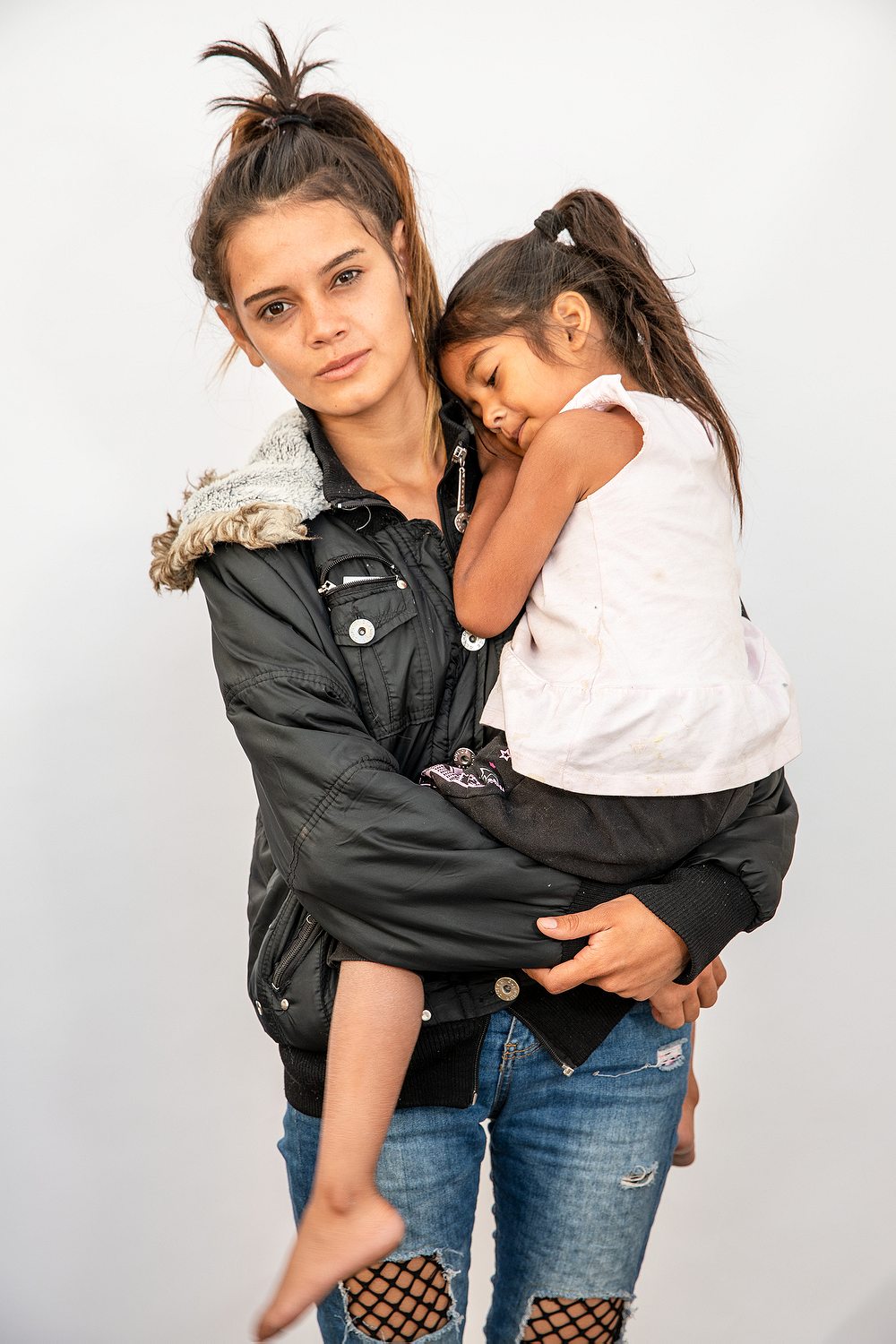
Roads & Kingdoms: How did this project get started?
Brett Gundlock: I was really intrigued by the hysteria around this caravan in particular. It was a huge number of people, and images of a huge mass of people walking down the road towards you is visually overwhelming. But I saw these images and I remembered the personal stories and the personal experiences that I’d been hearing over the years. The size of the group kind of erased the personal reasons why these people are fleeing their homes and leaving with whatever they can carry.
I always want to try to humanize people because when you put a human face on it, it can change the context of how a lot of these debates are looked at. So, I went down to the migrant camp in Mexico City, where they were going to rest for a number of days, and I just started doing portraits.
R&K: Why did you decide to use a white background for the portraits?
BG: The idea behind putting a white background in these scenes is taking the individual out of the mass. The caravan is visual chaos, which is super dramatic, but the individuals just get lost, and it’s all about the size.
I think that by using a white backdrop, it creates a bit of a formality to the portrait and, in a way, it honors the subject. For instance, the photo of a transgender girl, Jordan Yalir, who had to run because she was getting assaulted constantly. Behind her is just visual chaos, but this scene is a temporary moment in her life. This is a moment that she is passing through, and it isn’t how we should define her or her struggle.
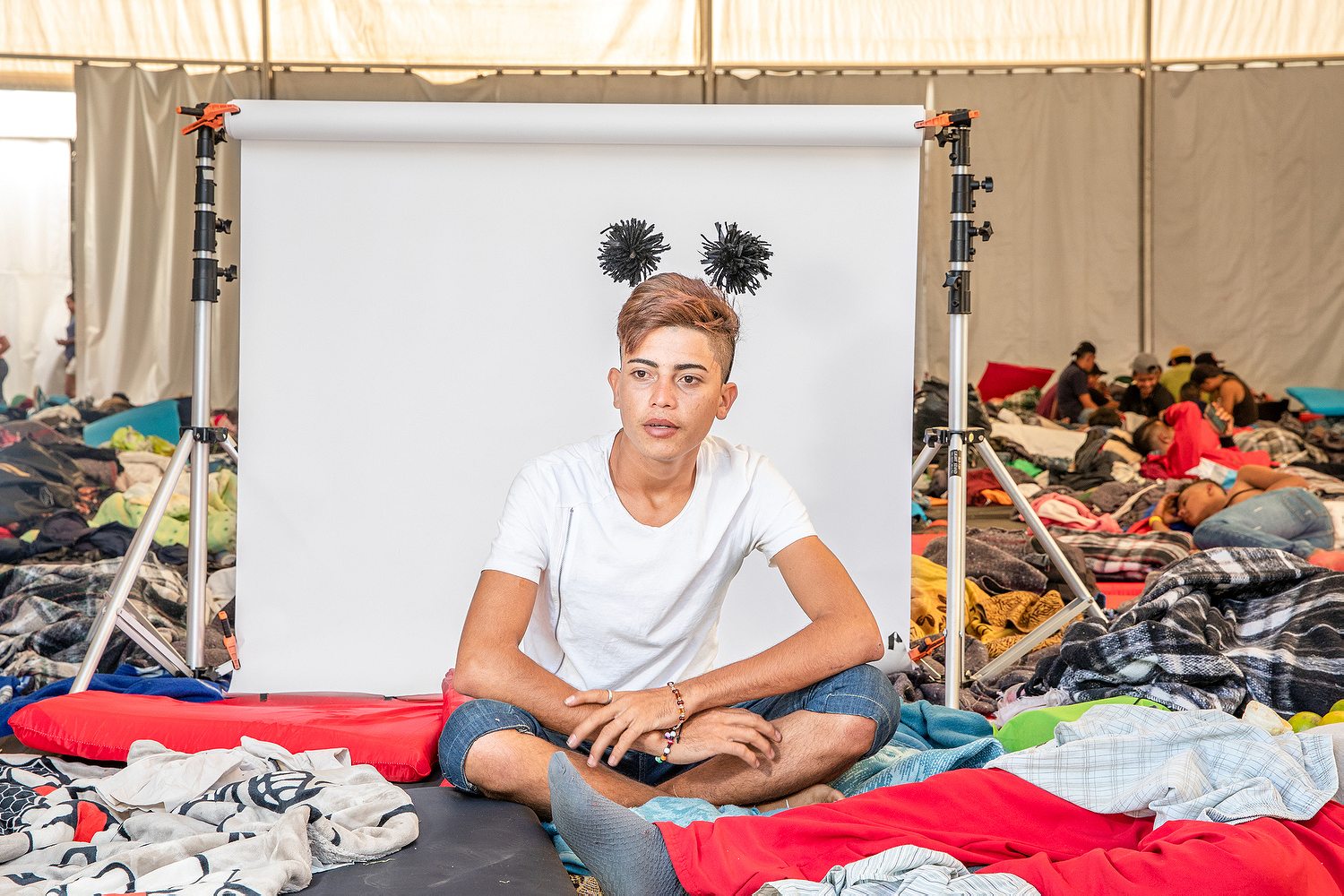
R&K: How did you go about moving with the caravan and the backdrop?
BG: I worked with two assistants from Mexico City. We went on the road for six days following the caravan as far north as we could, but there was a part where they took buses to cross the two most dangerous states and then went directly to the border. At that point I went back to Mexico City, regrouped, flew with all the equipment to Tijuana, and met the caravan there. Then I spent a number of days photographing on the border. It was really like a mobile studio. A studio on the go.
R&K: How did this project compare to the others that you’ve done on migration?
BG: The coverage I did last spring was really fast, standard news reporting. In and out. But this time it was pretty much three weeks, in total, working in Mexico City, being on the road, and then working in Tijuana. This was definitely the most invested that I’ve been in a caravan or people crossing Mexico like this.
It was really eye opening. These people are so strong. It was their strength that really kind of drove me. They would be on the move at 5 a.m. every morning, so we would wake up at 3:30 a.m. and try and get organized, and get down there, and shoot some images. Obviously, bringing the background around was logistically challenging. It was always falling over and it took time getting it set up. But, in a way, that was great because it limited me so I had to really slow down and focus, which I think always results in something special.
These portraits took 15 minutes to shoot, and beforehand I would do 30 minute interviews. I think that slowing down really helped me think about what we were doing and what was developing.
The debate should be why is this happening? And what is a possible way to fix it at its source.
R&K: What do you think the media gets wrong in coverage of Central American migration?
BG: Specifically leading up to the midterm elections, the debate was really focused on the effects that this is going to have on the United States, but that issue was completely blown out of proportion. Illegal border crossings are at the lowest level since 2002. Almost all of the drugs being caught on the border are entering through a port of entry. They’re entering somehow in a vehicle. They’re not going through this rugged terrain. They’re not sneaking in the back door of the country, according to the stats.
The migration that we see has always been young males going to the north to look for work and staying for some time before returning. Right now, we’re seeing mothers and children at unprecedented rates. To me, it’s not a debate about whether or not a wall should be built. The debate should be why is this happening? And what is a possible way to fix it at its source.
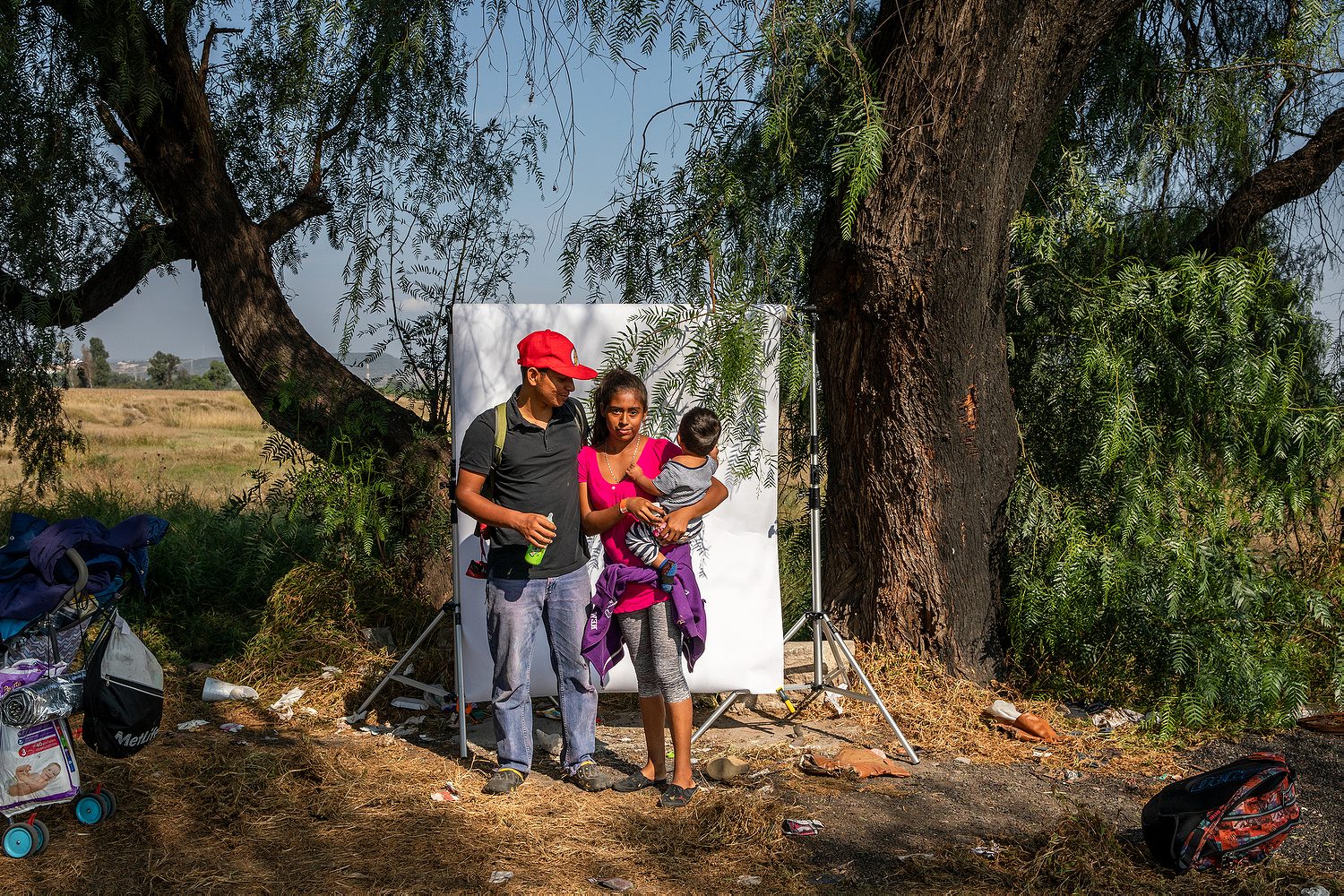
R&K: Why do you think people are migrating in this way?
BG: Mexico has been clamping down on immigrants from other Latin American countries crossing Mexico, mainly by cutting down the number of people who have been jumping on trains, which was a pretty easy way to cut through Mexico. By constricting that way of passage, Mexico forced the migrants to go on foot, which makes them easy prey for bandits and cartels along the way.
Crossing Mexico is really dangerous, so that’s why these caravans were formed. It’s a group of people of undefined size. Whether it’s 10 or 7,500 people they get together and say “Look, ‘I got your back, if you got mine.” Safety in numbers.
I did interviews where the person said they heard about the caravan one evening on Facebook, and then the next morning at dawn they were leaving. They know they can’t go back either because when the gangs in Honduras, El Salvador, and Guatemala find out that someone has immigrated, they’re waiting for them to come back. They’re like “hey, we know you went to the north, and you’re probably coming back with some type of money.”’ They’re not looking back. They’re just going forward. It’s the only option. So, for me, that’s the most compelling part of this topic to address with my work.
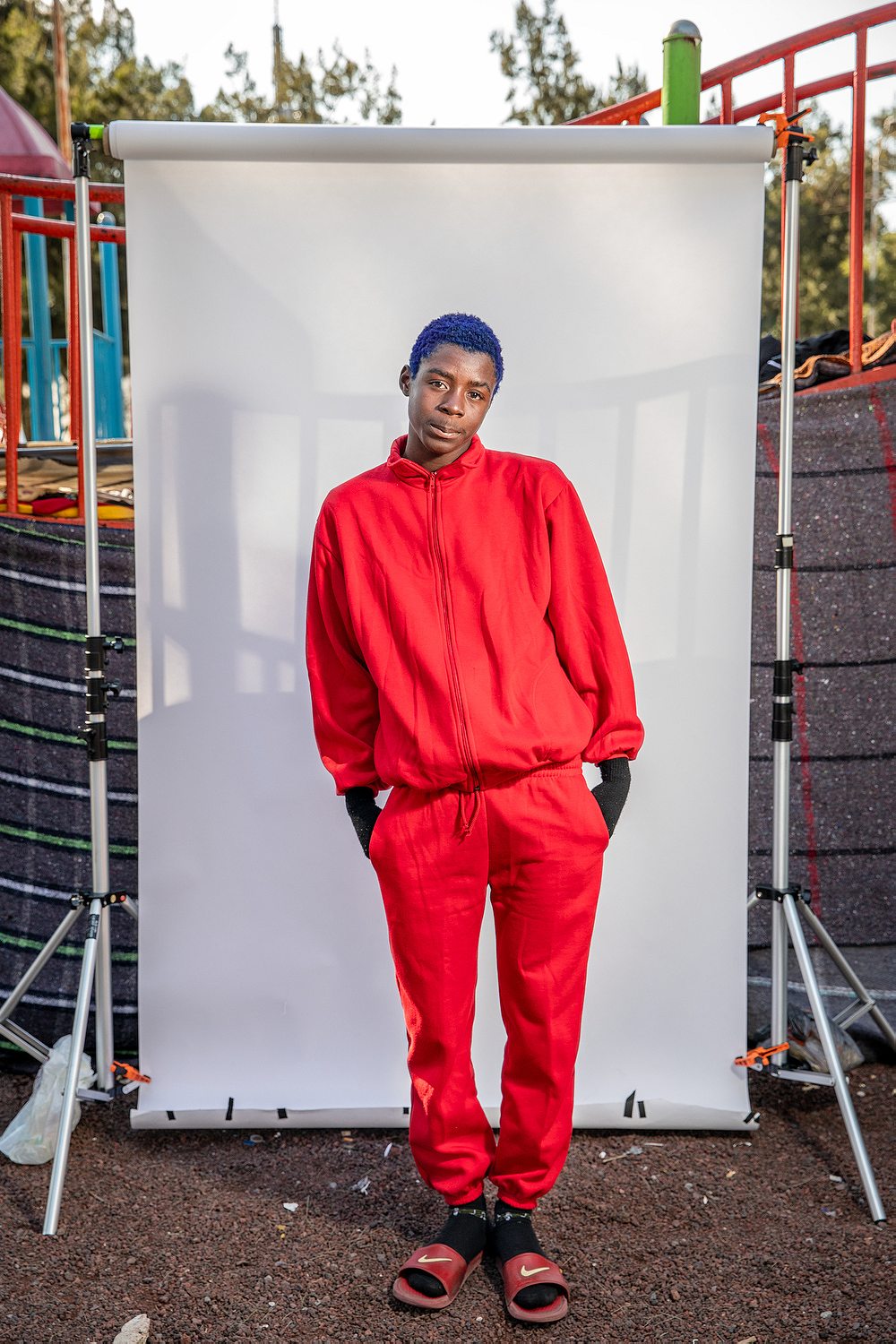
R&K: What’s the story behind the portrait of the young man in the red track suit?
BG: This is one of my favorite guys. Diablo, which is his nickname, was quite a character. You see he’s got purple hair there and this bright red tracksuit. When he crossed into Chiapas in southern Mexico, he found someone selling these tracksuits so he bought three of them for the trip. He was 16-years-old and a star soccer player in his area. He was playing in a soccer league with older guys and studying at school. Really on the right track. But those gangs, they want everyone. There were guys hanging outside of Diablo’s school, telling him and his friends to come over and smoke some weed. That’s what the gangs do, they make contact and they slowly pull you in until you’re fully indebted. So he and his friends said ‘No, leave us alone.’
Then there was a fight, which Diablo said he and his friends won, but the gang threatening them afterwards. A few days later, his friends’ decapitated heads were found at the front of their school. The gang went looking for Diablo, and his mom had to hide him and then send him out of town.
R&K: Why was the couple you photographed sitting on the concrete road barriers traveling with the caravan?
BG: Maria worked at a spa and Eduard worked at an auto mechanic shop, but both of the businesses they worked at closed. He talked a lot about the tax of war in his interview. It’s basically extortion. That gangs charge businesses, often to the point where they can’t make profits and they have to shut down. A lot of times it’s the local police that are doing it. There’s no justice, and if people don’t pay, they’re killed. Everyone has a story like that. There were so many stories of ‘my father or my uncle fell into the hands of criminals and they couldn’t pay, and that was a wrap.’
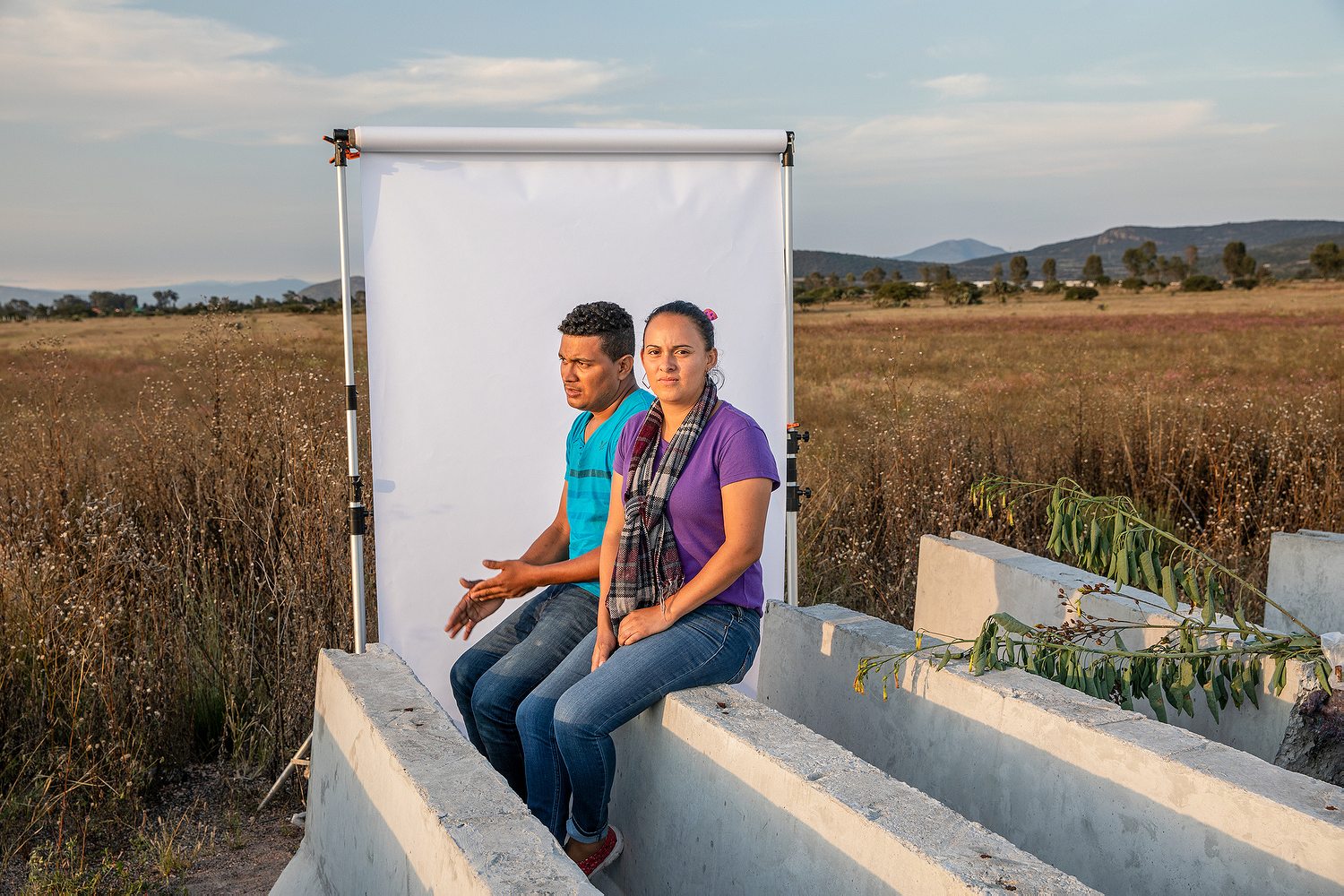
R&K: What was the local population’s reaction to the people in the caravan?
BG: It’s a mixed reaction and a contested issue. There are some people that are against the migrants, but I would say the vast majority are very supportive of the caravan or of these groups of migrants. I feel like the majority of Mexicans know someone that migrated to the states and are living there illegally. They understand what that process looks like and how hard it is. From what I’ve seen people are very generous towards the migrants. I think some of the towns on the route are starting to get a little strained and people are starting to get a little annoyed. But again, the vast majority are supportive. It’s really nice to see.
R&K: What was the thought process behind printing this project?
BG: We published it on Mother Jones, which was amazing. They obviously have a huge audience that are politically receptive to this style of project. But I don’t know if I’m old school at my young age of 33, but it feels like things on the internet are here one day and then gone. The cycle of news and this type of work on the internet is so fast. I really wanted this project to live in a physical document, and I had been talking with this small publishing house in DC called Homie House Press. They’re doing really cool projects focusing on sharing these narratives and ideas through different distribution channels like libraries and even jails.
The internet’s great. You can share it on your social media and your friends that all have the same political beliefs will see it, but the idea of putting it in a physical zine or physical product will it allow it to have a longer lifespan and hopefully reach people that maybe aren’t following Mother Jones.
I always think that the work that we do is for the present, is to inform, and hopefully helps give context to some of these major issues that we’re debating. But it’s also for history. Theoretically, it might influence something in the future as well. That was the idea of making it into a physical product. I’m quite happy with how it came out there and that we released the project in both English and Spanish. That was important to us.






